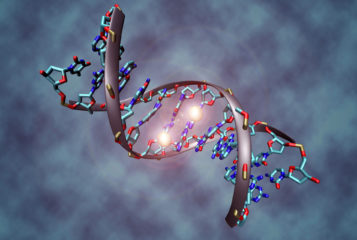Lifestyle and environmental factors can alter sensitivity to pain by switching certain genes on or off, according to research from King's College London.
One in five people suffers from chronic or acute pain, but its underlying molecular mechanisms are not yet fully understood. The researchers hope that this study, which highlights the epigenetics behind pain, will provide new drug targets for painkillers.
Dr Jordana Bell, who led the study, said the results were 'very exciting and could lead to a more effective pain relief treatment for patients suffering with chronic pain'.
The study looked at 25 sets of identical twins with a different pain tolerance, where one twin had particularly low sensitivity. As identical twins share all their genes, any differences would be due to environmental differences causing epigenetic changes.
To determine their pain threshold, each twin had a heat probe attached to their arm, which became increasingly hot. When the heat became too painful, they pressed a button. The DNA of each twin was then screened and differences between the genes involved in pain sensitivity were examined.
Nine genes were found to have epigenetic differences that meant they were expressed differently when exposed to pain. The most significant chemical differences were seen in a known pain sensitivity gene, TRPA1, which is currently a therapeutic target in the development of some painkillers.
These results were confirmed by examining, in the same way, a group of 50 unrelated individuals.
Tim Spector, professor of genetic epidemiology at King's College London, said that epigenetic changes acted like a 'dimmer switch for gene expression'.
He added: 'This landmark study shows how identical twins, when combined with the latest technology to look at millions of epigenetic signals, can be used to find the small chemical switches in our genes that make us all unique - and in this case respond to pain differently'.





Leave a Reply
You must be logged in to post a comment.